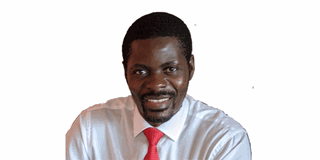
Author: Moses Khisa. PHOTO/FILE
I pick up from where I left last week. It is difficult to summarise an academic book of more than 300 pages in one newspaper column, so that is not what I will do here. As I flagged last week, a new book I conceived and executed was published earlier this year, launched last week. Its title is tellingly, Autocratisation in Contemporary Uganda.
Whether the book is compelling enough and adds value to our understanding of the increasingly rusted rule of President Museveni is a judgment-call for perceptive readers and critics out there to make. What I want to do here is provide the gist of the book’s central argument. I will leave it to readers to deduce the takeaway or decipher what makes sense.
For a country that had seven different governments in the first 23 years of independence, 1962-1986, it is utterly extraordinary that Uganda has since been under the rule of one president and party for nearly 40 years.
To survive this long, President Museveni has had to adapt. He has had to be adept at changing circumstances and conditions, to recalibrate his strategies, to renew critical resources and replenish his ruling coalition pool.
The longer Mr Museveni has succeeded in negotiating different rough-edges of ruling a poor yet socially complex country, the better he has mustered the art, experience and tactical wherewithal to press on.
At the risk of sounding circular, I want to propose that by managing to adapt to changing circumstances, weather all sorts of storms and challenges to his rule, Museveni is able to survive, and by surviving, he adapts. This is what in the book we call the ‘theory of autocratic adaptability’. Adapting makes survival possible, and survival in turn feeds adaptation. There is a crucial feedback loop.
To understand Museveni’s long rule and why much of what transpires has come to be built around him in a very personalist, autocratic system, it is important to consider three core pillars, which we use to organise the book’s eleven empirical chapters.
The first pillar is the institutional landscape or what in the book I refer to as institutional mosaic, meaning a complex multiplicity and panoply of institutions, working both as instruments of rule but also providing a veneer of legitimacy.
Institutions are more generally defined as rules of the game. They are not just physical bodies and organisations, they also mean the broad array of behaviour and actions that conform or not to a certain routine.
This means institutions are both formal and informal, can refer to a formally established arena like Parliament or the Judiciary but also informal networks of patron-client relations where money or other material goodies change hands. We show in the book how different institutional spaces and platforms enable autocratic adaptability but also in turn erodes the institutional landscape that further entrenches autocracy.
The second pillar is the resource pool supply. Resources can be both material and nonmaterial. Mobilising monuments and memorabilia, including endowing them with speech play and symbolism plays crucial roles in granting a government legitimacy and giving a president grounds to justify his rule.
Museveni has successfully done this, but more importantly he has managed to consistently mobilise material and financial resources both at home and abroad. Today, we are in the grip of strike-actions by traders in Kampala over taxation.
From the outset, Museveni understood that he needed money to rule for long. Thus, Uganda Revenue Authority was established in 1991 in part with the urging of donors but also because Museveni was acutely aware of the necessity of extracting revenue.
No less significant, for long he stayed in the good books of Western benefactors. His pursuit of financial resources also meant directly meddling and influencing processes in critical sectors such as electricity, the subject of a very interesting chapter by Roger Tangri and Andrew Mwenda.
The third and final pillar is what I call coalition replenishment. One can point to many things that matter a great deal, but the capacity to dispense with and simultaneously resupply new political and military troops is so central to sustaining long autocratic rule in the fashion Mr Museveni has managed to accomplish.
Just think about all the old guard with whom he came to power in 1986; there are only a handful in Cabinet and almost none left in the military, the latter being Museveni’s most important constituency and source of power.
The average age of today’s Cabinet is mid/upper-40s for a President who is 80-plus! And in a Cabinet of 80 members, only about three are members of the 1986 crew. In Parliament, a very important site of national political accommodation and co-optation, both the Speaker and deputy are not just total outsiders, they were previously youth-wingers of the main Opposition party. Think about that for a moment.
What does all this mean for our present politics but especially for the future of the country? It is to this question that I shall turn next.
Mr Moses Khisa,
[email protected]

